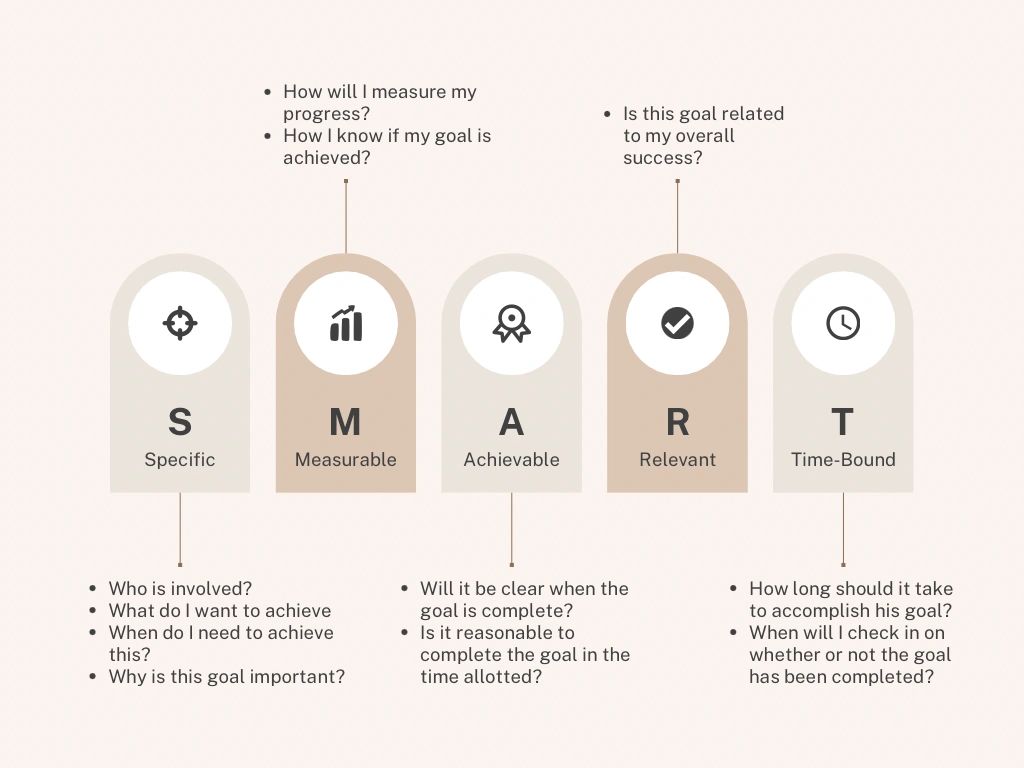In a world that often glorifies hustle and the pursuit of lofty ambitions, it’s easy to overlook the power of setting realistic goals. While dreaming big is essential, grounding those dreams in achievable steps is what turns vision into reality. This guide will walk you through the process of setting realistic goals, ensuring that your aspirations are not just dreams but attainable milestones.
Why Setting Realistic Goals Matters
Setting realistic goals is crucial for several reasons:
- Boosts Motivation: Achievable goals provide a clear path forward, keeping you motivated as you witness progress.
- Reduces Overwhelm: Breaking down large ambitions into manageable tasks prevents feelings of being overwhelmed.
- Enhances Focus: Realistic goals help you concentrate your efforts where they matter most.
- Builds Confidence: Achieving set goals reinforces self-belief and encourages you to take on new challenges.
Step-by-Step Guide to Setting Realistic Goals
1. Define Your Purpose
Before setting any goal, understand the ‘why’ behind it. Aligning goals with your core values ensures sustained commitment.
Example: If your goal is to improve health, determine whether it’s for increased energy, longevity, or self-confidence.

2. Set SMART Goals
Ensure your goals are:
- Specific: Clearly define what you want to achieve.
- Measurable: Quantify your goal to track progress.
- Achievable: Set a goal that is challenging yet attainable.
- Relevant: Align the goal with your broader objectives.
- Time-bound: Set a deadline to maintain focus.
Example: Instead of “I want to exercise more,” set “I will jog for 30 minutes, three times a week, for the next month.”
3. Break Down Goals into Manageable Steps
Divide your main goal into smaller tasks. This approach makes the process less daunting and allows for regular progress checks.
Example: To write a book:
- Outline chapters.
- Set daily word count targets.
- Schedule writing sessions.
4. Anticipate and Plan for Obstacles
Identify potential challenges and develop strategies to overcome them.
Example: If time constraints are an issue, consider waking up earlier or reducing time spent on non-essential activities.
5. Monitor Progress and Adjust as Needed
Regularly review your progress. Celebrate small victories and be flexible to adjust your plan if circumstances change.
Example: If a weekly goal isn’t met, analyze the reasons and modify your approach accordingly.

Example: Achieving a Fitness Goal
Scenario: Jane aims to run a 5K race in three months.
- Purpose: Improve cardiovascular health and participate in community events.
- SMART Goal: Run 5 kilometers without stopping in 12 weeks.
- Breakdown:
- Week 1-4: Walk-run intervals.
- Week 5-8: Increase running duration.
- Week 9-12: Continuous running with pace improvement.
- Obstacles: Weather conditions, motivation dips.
- Solutions: Indoor treadmill sessions, running with a partner for accountability.

By setting a realistic plan, Jane increases her chances of success and maintains motivation throughout her journey.
Tips for Maintaining Momentum
- Visualize Success: Regularly imagine achieving your goal to stay inspired.
- Seek Support: Share your goals with friends or join groups with similar objectives.
- Stay Flexible: Life is unpredictable; adjust your goals as needed without guilt.
- Reflect Regularly: Take time to assess what’s working and what isn’t.
Setting realistic goals is a powerful strategy to turn aspirations into achievements. By understanding your purpose, creating SMART goals, breaking them down, anticipating challenges, and monitoring progress, you set yourself up for success. Remember, the journey is as important as the destination. Celebrate each step forward, no matter how small.
Bonus Freebie: Want My Full 10-Day Reset Guide?
If this post spoke to you, I’ve created a free 10-day mindset reset guide with more micro-habits to keep you grounded and growing.







